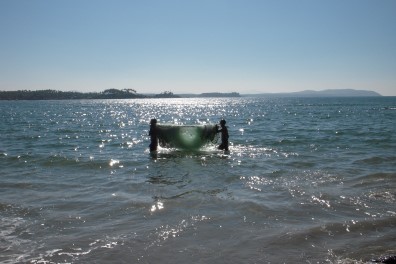In April, an in-depth study of the Tamil Nadu State Water Policy 1994 and the Goa State Water Policy 2000 was made in the light of the provisions in the National Water Policy 2012. It was found that there are several aspects on which there is a broad similarity (with some differences in emphasis and details) between the two state policies and the National Water Policy 2012.
These include the need for a basin approach and a Master Plan or Integrated Plan for development of water resources, a need for augmentation of water resources and for measures to be adopted to that purpose.
There is also a common concern on over-exploitation of ground water, and both policies cover the introduction and strengthening of community participation in irrigation projects, controlling water pollution and improving water quality. There is also an emphasis on water conservation, adoption of improved water application devices and water pricing. Furthermore, the policies mention improvement in data collection, processing and dissemination, and research for up-gradation of technology and training.
Differences
At the same time, there are dissimilarities, especially in the case of Goa. This is because Goa’s water resource scenario has several peculiar features, for instance proposals to regulate extraction of sand from river beds to check the damage caused by mining activities.
This is unlike the National Water Policy and Tamil Nadu Water Policy, which have more or less similar approaches for the management of floods and droughts. The Goa State Water Policy however makes no mention of flood or drought related issues.
The National Water Policy and Tamil Nadu policies also puts emphasis on the principle of equity and social justice as well as recycling and reuse of water, but these issues are not mentioned in the Goa state water policy.
Climate Change Addressed and Ignored
Concerning climate change, the National Water Policy 2012 has a separate section where coping strategies to deal with climate change are indicated. References to climate change are also mentioned in several different places in the policy document. These throw light on water related impacts of climate change and the need to keep these impacts in mind while taking decisions related to planning and management of water resources.
The Tamil Nadu Policy makes no reference at all to climate change. This is understandable since there was little awareness of climate change aspects in 1994 when the Tamil Nadu Policy was announced. The Goa State Water Policy, however, stresses the need to take into account global warming and potential sea level rise for planning water resources development. Goa may be the only state in India which included climate change related aspects in its State Water Policy, even much before it was included in the National Water Policy 2012.
Work in Progress
Several important features of the National Water Policy 2012 are still missing in the water policies of both the states. For instance there is still a need to include aspects related to good governance through transparent and informed decision making, a need for multi-disciplinary water organizations, and for water, including ground water, to be managed as a common asset.
Photo: Fishermen with net, Goa, India.

